Feature
With women miners, Pact & partners build an ethical gemstone supply chain from the ground up
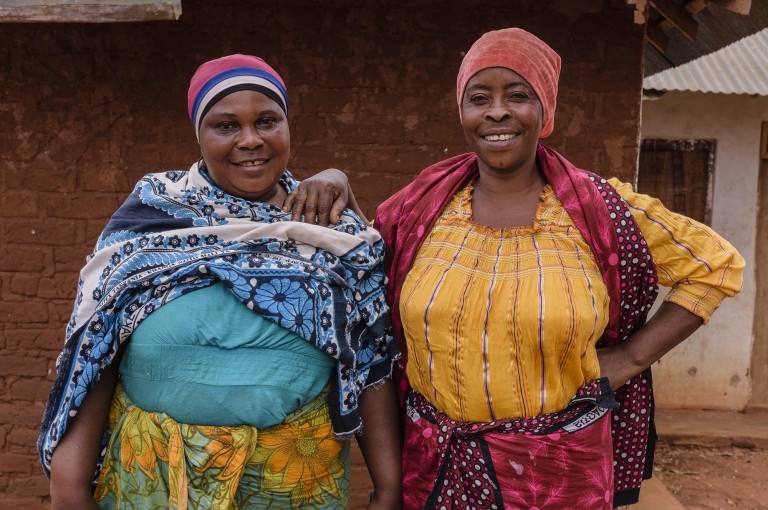
When the Gemological Institute of America approached Pact’s Cristina Villegas in 2016 about piloting a rough gemstone guide for miners, Villegas immediately knew where to start. As director of Pact’s Mines to Markets program, she’d worked with artisanal and small-scale miners around the globe, helping them to mine more safely and efficiently to improve their lives. While in Tanzania, she’d come across an association of women miners, the Tanzanian Women Miners Association, or TAWOMA, and was immediately impressed by how well the group advocated for its members.
Let’s start with TAWOMA, Villegas told the Gemological Institute of America. Soon, all three organizations were on the ground in Tanga, a region of eastern Tanzania near the Indian Ocean that is home to rubies, sapphires, garnets, tourmaline and more. The partnership provided critical training directly to gemstone miners, many of them women, so they could better understand their gems and how to handle and sell them for the best prices.
“We’ve often found that miners – the ones doing the hardest work in the gem trade – know the least about gemstones,” says Villegas. “This puts them at an obvious disadvantage when it comes to selling, when the gem’s species, features, cut potential and hues all come into play and when basic gem knowledge is power. We wanted to level the playing field.”
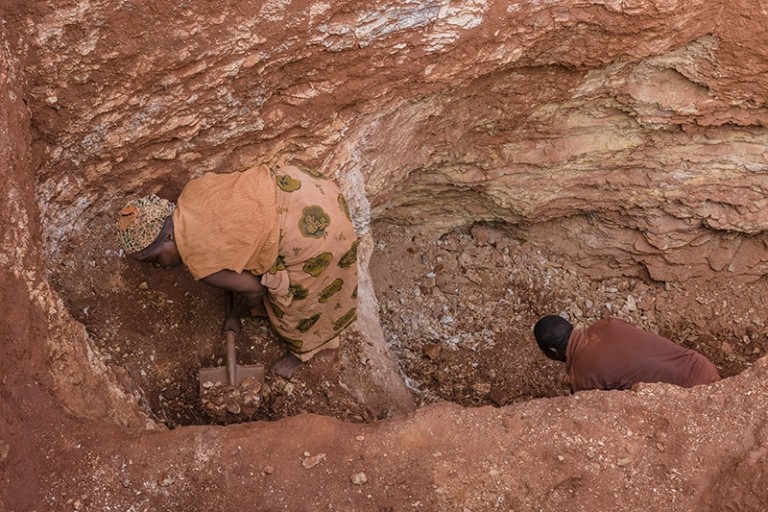
The trainings were a success, but working with Tanga’s gem miners highlighted another big problem they faced: They lacked a consistent market for selling their gemstones. Often mining and living in remote areas far from paved roads, and without the means to travel into more populated areas, miners were forced by necessity to sell to local brokers for whatever price was offered – generally far less than what their gems would end up fetching further along the supply chain. Local brokers also usually withheld half the selling price until they sold the gem on; often, miners never got what they were owed.
This struck Villegas as a problem related to an even bigger one: the sector’s significant lack of ethically assured gemstones. Some 80-90% of all colored gemstones are mined from ASM sources, yet there was no model that even verified these were mined legally.
It was around that time, while speaking about the Tanga trainings at the 2017 Chicago Responsible Jewelry Conference, that Villegas met Monica Stephenson of US-based ANZA Gems and Stuart Pool of UK-based Nineteen48 gems. Both gem dealers wanted to know how they might buy from Tanga’s women gem miners.
It was then that a solution began to emerge. A few months later, the group visited the women miners in Tanga to propose their basic idea, solicit interest and co-design a program with the miners themselves, with the leadership of TAWOMA and with key local leaders. The result, an ethical gemstones program called Moyo Gems, officially launched this spring. Moyo’s partners include Pact, TAWOMA, ANZA and Nineteen48, along with the emerging technology enterprise Everledger, which is providing blockchain services.
Moyo, which means “heart” in both Swahili and Shona, works like this.
To take part, miners must be members of TAWOMA, and they must have attended a no-cost occupational health and safety training provided by Pact through its mining engineering partner, MTL. Miners must also demonstrate a legal right to mine on the land where they work.
“The idea is to progressively raise standards, making their work safer and more productive, lucrative and formalized,” Villegas explains. “Over time, all of Moyo’s miners will reach the CRAFT mining standard, which Pact helped to create.”
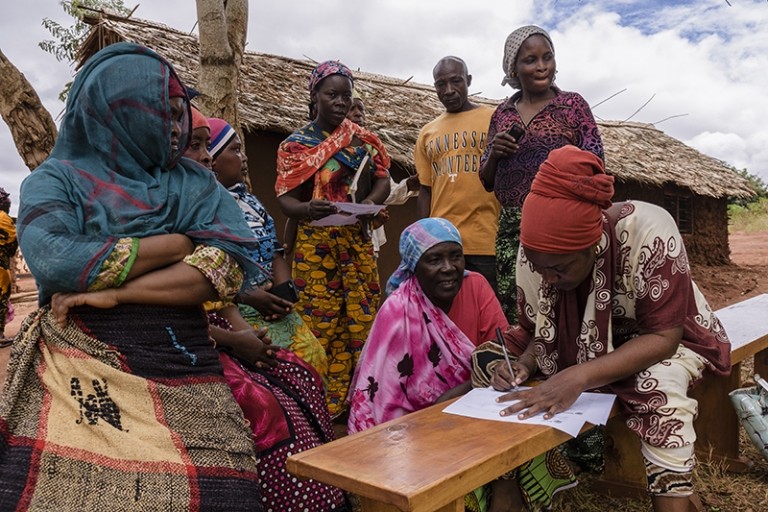
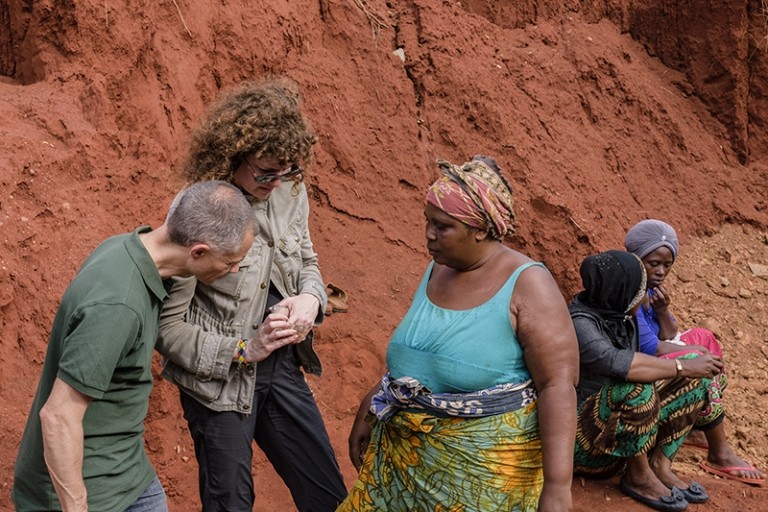
Once they meet Moyo’s participation criteria, miners are invited to attend regular Market Days held near their villages where they can sell to ANZA, Nineteen48 and other international buyers. Local gem brokers who have been vetted by TAWOMA and hold valid broker licenses also attend. Each miner selects a broker to represent her, and together they sell directly to the international buyers.
This is a significant change, notes Rebecca Villalobos, who is leading the Moyo Gems pilot team. “It changes the relationship between miners and brokers from natural adversaries to partners,” Villalobos says. “When the final price is fair, both the miner and the broker win, and the miner sets the broker’s fee instead of the other way around.”
The buyers then export the gems in accordance with Tanzanian law with the assistance of a Tanzanian gem exporter. Miners and brokers pay a small fee to take part, some of which helps pay for the program and some of which goes to TAWOMA for reinvestment into mining communities.
“It was important for us to work on this project because it is meeting a real need for women miners, and in a way that gives them more power,” says Salma Kundi, TAWOMA’s secretary general, who mines garnet, tourmaline and zircon. “Everywhere we’ve had challenges, we’ve worked together with Pact to move Moyo Gems forward.”
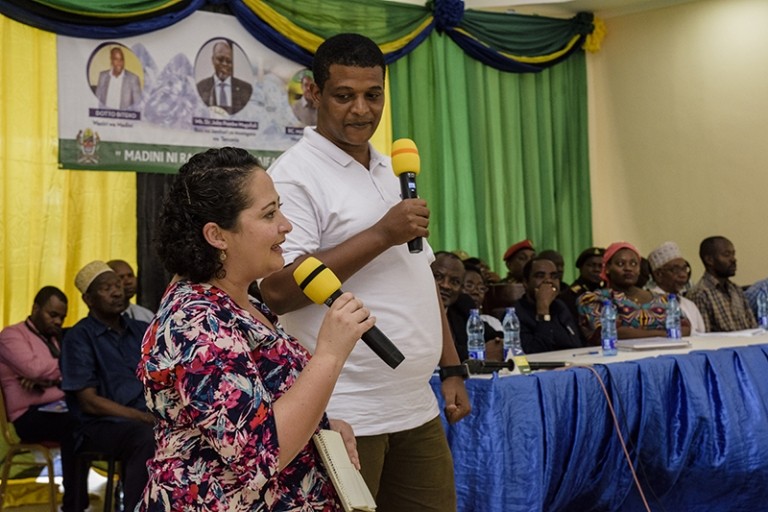
Moyo held its first two Market Days this May, in the Mkinga district of Tanga, where more than 70 miners, most of them women, came to sell their gems. Many said they sold for prices two to three times higher than they’d have gotten otherwise. On average, Moyo miners make 95% of the pre-export price of their gemstones.
“Before Moyo, the options for selling weren’t good,” says Fatuma, a 47-year-old mother of six who mines red garnet. “I just waited for the local brokers to come to me, and when they did, I always needed money, so I would sell, no matter the price. The local broker decided everything.”
Besides subsistence farming, Fatuma says, mining is the only real option she has for supporting her family. She and her husband mine on their small claim together, usually working six days a week.
“Yes, mining is hard,” Fatuma says. “But I’ve raised my position through mining. There is nothing else. With more knowledge about gemstones and with this market, I can rise up more.”
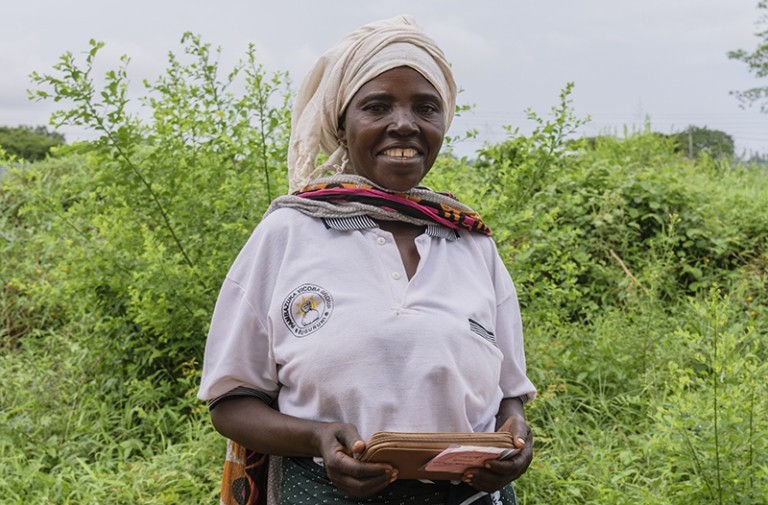
Prisca, who has three children and mines green tourmaline, says she dreams of the day when she earns enough to build her family a bigger, sturdier house and to pay for safety equipment for the small crew she employs to mine her land with her. Among her biggest challenges has been getting a fair price for her hard-earned gemstones.
Asked why she came to Moyo’s first Market Day, Prisca answered, “Because this is our market.”
In all during Moyo’s inaugural Market Days, Stephenson (ANZA) and Pool (Nineteen48) purchased more than 1,900 carats of sapphires, rubies, tourmalines, garnets and other gems. This will increase as the program expands within Tanzania. Moyo plans to continue holding regular Market Days to provide Tanga’s miners with consistent access to international buyers.
“It was an amazing experience being able to buy directly from these women and to put that money right into their hands in exchange for the incredibly hard work they do,” Stephenson says. “We made sure to provide feedback for future Market Days about why we were or weren’t buying certain gemstones and about how we evaluate them. So there’s a built-in learning opportunity that over time will dramatically improve miners’ market skills, gem skills and income.”
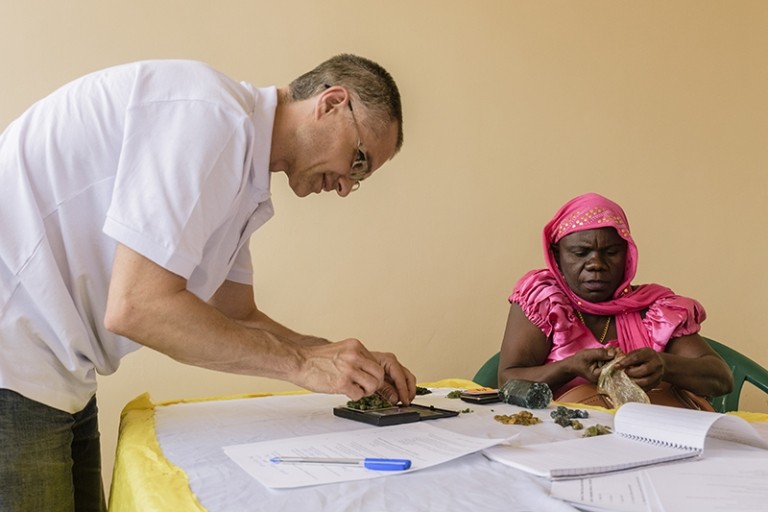
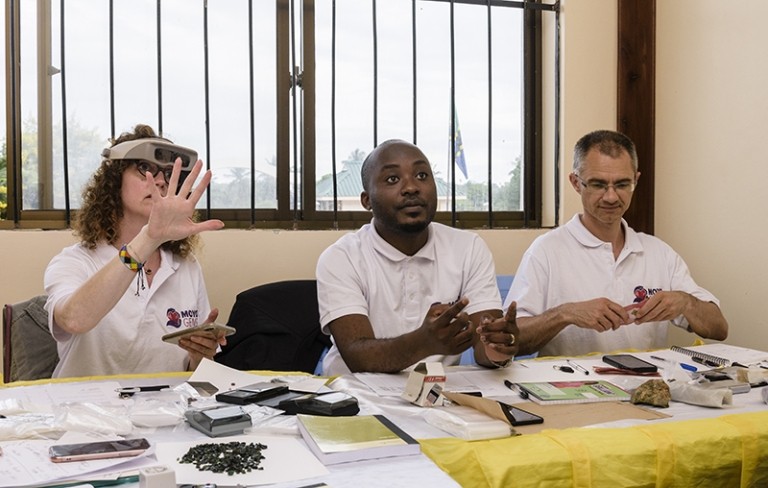
Moyo’s partners also tested the process for recording the mine-to-market journey of Moyo gemstones on blockchain, which assures those who buy Moyo Gems, including other gem dealers and eventually jewelry consumers, of their origin.
“We’ve taken the approach of experimenting to learn and adapt quickly,” Villalobos says. “We launched the pilot within a year of the initial conception. Our strength has been in testing program components as hypotheses and building up from there, which is very different from traditional development programming.”
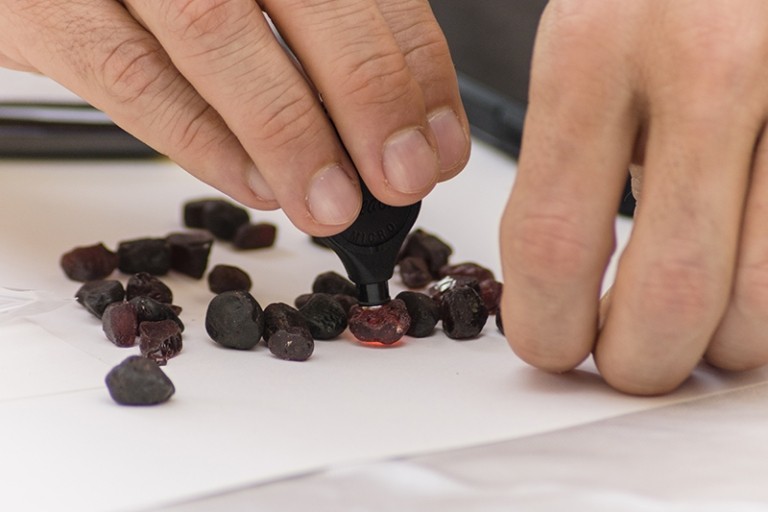
Pact is also working to ensure Moyo Gems becomes financially self-sustaining.
“The team always says we have pan-African dreams,” says Katie Fackler, a manager with Pact Ventures, Pact’s impact investing unit, which provided the initial capital for Moyo Gems. “A big part of that will be determining whether we can make this model sustainable. If we can make this work without dependence on long-term donor funding, we can then expand to many other gem-producing regions across Africa.”
Ultimately, Fackler says, the model may leverage blended finance, combining revenue generated through Market Days with traditional donor funding for components of the program that are harder to monetize, such as capacity-building services for participating miners. This is to be tested and refined in the coming months.
“We hope this is just the beginning,” Fackler says.
Villegas agrees.
“First and foremost, this is about individual miners and creating the market access they need to be paid fairly. But this is also about industry reform and transforming how gems are bought globally. Consumer demand for ethical jewelry is growing, but the gemstone sector has struggled to step up and build ethical supply chains. Even verifying miners’ licenses is a big step, but we’re also working to improve safety, to raise miners’ incomes in ways that last, and to empower women miners, a part of the sector that has long been ignored,” she says.
“We hope the Moyo model can be a solution that improves miners’ lives on a much grander scale.”
CONTRIBUTE TO MOYO GEMS
Learn more at moyogems.com or in this Forbes article.
Lead photo: Miners Prisca and Mary in their village in Tanga.